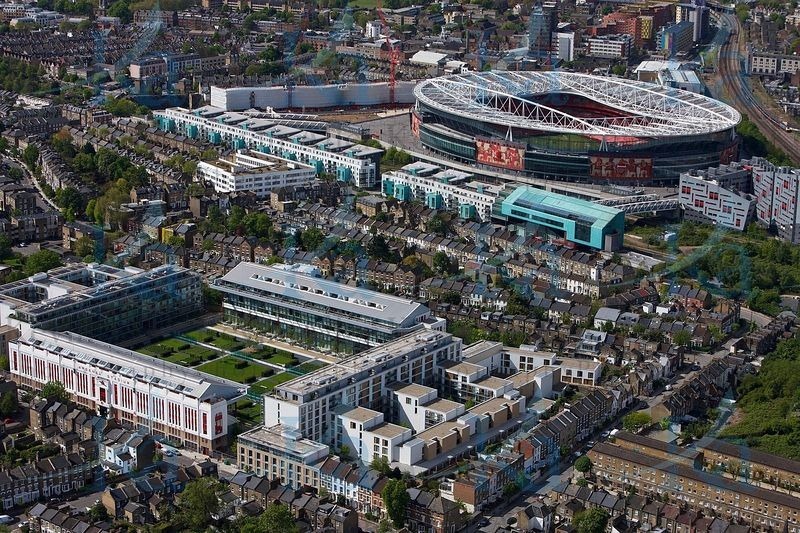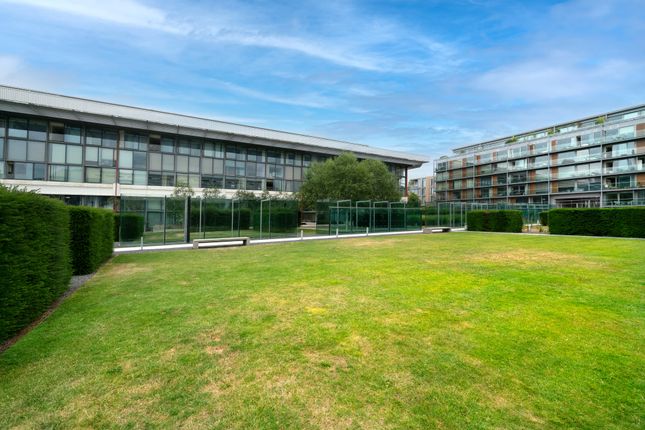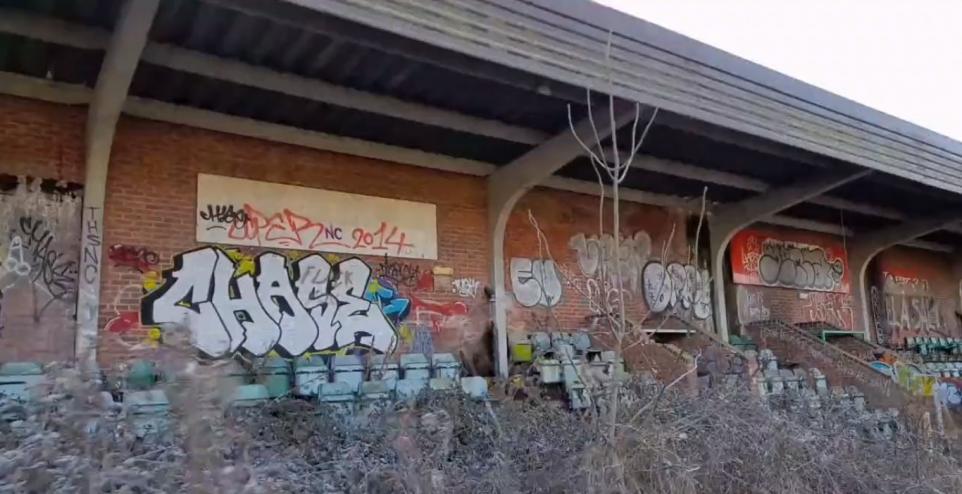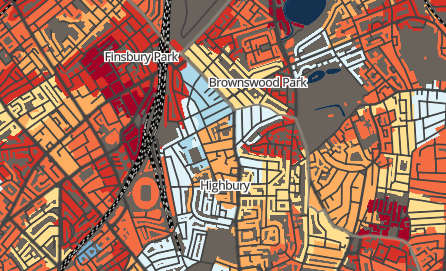

The primary function of a stadium or arena is to play host to events of any kind, typically music or sport. This fills these inanimate spaces with sound and emotion and passion. Therefore, by contrast, when these places fall silent it is nothing but eerie and haunting, likely because of the monumental juxtaposition in atmosphere. I recently watched an exploration fo the abandoned RFK Stadium in Washington DC, and the silence was extremely heavy - you think you could imagine the sound - but you can't. And this made me think about other now defunct stadiums. Of course, there are many reasons a stadium may become defunct; from no longer meeting capacity needs, to decay, but sometimes it just feels like someone ripped out the heart of these structures. The people who once inhabited gave them life - and in the situations I will describe, they have been completely and utterly driven out and excluded.
 |
 |
|---|---|
| Highbury Square Development from Above | Highbury Square Development from Inside |
The final match at the Arsenal Stadium (or Highbury, as it is also known) was played on the 7th of May 2006. The club moved as the 20,000 capacity stadium was regularly nearly full, and its listed status meant expansion was near impossible. Much of the stadium, pertinently the North Bank and Clock End stands were demolished, and many parts could not be sold as memorabilia due to trace levels of toxic metals. Since then, the remaining Art-Deco facade of the stadium has been redeveloped into luxury flats in a development called "Highbury Square" (pictured above). Much of the architecture of these flats does not match the vernacular of the area, much less the Art-Deco style of Highbury. It is in this way that it becomes visible that much of the character of this stadium has been destroyed. Whilst it is understandable that the club left the stadium, the way in which it has been redeveloped is a shame. These flats are known to have relatively high rent, which is not unusual for London - but it is a shame as much of this area of North London is in the most deprived percentiles in England - the developers could have chosen to give back to the community, but they did not. And this related back to the idea of soul, and character. Arsenal is recognsed as the club of the people, but the way in which Highbury has been redeveloped does not reflect this, nor does it reflect the needs of the wider area in which it is situated.
 |
|---|
| Abandoned and Decaying Stand at Aylesbury's Buckingham Road |
A similar, but much less well known example of this greed is the fate of Aylesbury United's Buckingham Road ground. The club played there from the mid-1980s until they were evicted in 2006, even once hosting England's national team in June 1988, to whom they lost 7-0. The stadium was barely 20 years old when the Ducks' lease expired. The club did bid to regain their stadium, but were outbid by a property developer who intended to demolish the previously busy stadium to build a residential neighbourhood. Not only has this not happened, and the ground has just been left to decay, but the Aylesbury Vale area has a surplus of new-build housing, and the county's green space is rapidly being carved up by housing developments and the HS2 railway. Ownership of this ground going to such a company is undoubtedly a bad thing. Unlike Arsenal, Aylesury United did not get a new home. The club has not had a home since 2006, sharing grounds with the likes of teams in Thame, Leighton-Buzzard and Chesham. This almost functions as a microcosm of wealth inequality within the English football pyramid - there is little consideration given to the survival of smaller clubs, despite smaller, local clubs increasingly being the more accessible ones, as the cost of living grows ever higher, and the cost of Premier League tickets balloons. But, even ignoring the dissapointing financial factors at play, the lasting impression I get from this is that a property developer thoughtlessly ripped a football club away from its home where they were once well supported, and gave back to the community, and then left it to rot. If the abandoned, but still relatively clean RFK Stadium is sad, the decaying Buckingham Road, being consumed by nature and vandalism is heartbreaking, and forces you to remember - you can never go back.
 |
|---|
| Map of Multiple Deprivation Percentiles for the Highbury Area (The darker the red, the worse the deprivation) |
Perhaps things like this are always fated to happen in England, a country with some of the worst wealth inequality in the developed world, especially in places like London, where gentrification is rife and drives out the more deprived original inhabitants, or Buckinghamshire, where the working class population is treated as invisible both within and outside of the county. Ian Goldin and Tome-Lee Devlin write for The Guardian that "Formerly affordable, working-class areas have seen significant gentrification", and the inequality profile for the Highbury area of Islington (above, with the deepest red representing the most deprived percentile) demonstrates that the catering of a historically deprived area to the more wealthy in society is likely to drive out many of the residents in the area. A driving factor in gentrification is those who can afford to seeking to embody the aesthetics of the working class without the struggle, and it almost makes sense that a football stadium has become luxury flats - football is a traditionally working-class sport, but here, they are excluded. The context is somewhat different in Buckinghamshire. The county's proximity to London and idyllic vistas make it desirable, and therefore it is largely made up of an affluent population. In Buckinghamshire, the working class are often invisible or sidelined, even down to the original regional accent (associated with being working class) being near-extinct in favour of the more 'sophisticated' Recieved Pronunciation accent. As previously mentioned, the football club did work in the community, and in schools, and this is especially important to those who may be otherwise deprived of such experiences - this was ripped away by corporate greed, and once more, Buckinghamshire's less fortunate were sidelined. The use and manipulation of traditionally working class parts of society to cater to the richest not only carry financial implications, but also cultural ones - it makes football more exclusive, and, as in the case of Aylesbury, could divorce a club from a once devoted community.
It is likely that neither of these things are as simple as I have made them seem. Ultimately, financial dealings can be complex, and as with Arsenal's inital departure from Highbury, there are often multiple factors at play. However, it remains that in both cases, football has become a little more exclusive, and once beloved venues have fallen silent, like Buckingham Road, with its haunting forsaken appearance. This represents the geographical phoenomenon of homogenisation - these buildings, once almost alive with passion, have been transformed into glass-fronted flats or boring, identical detatched and semi-detatched hoses, catering only to middle- and upper- England. Once these places may have represented passion (and they are of course, not the only places that have lost their original sense of place), but now they are just another symbol of England's rampant wealth inequality.